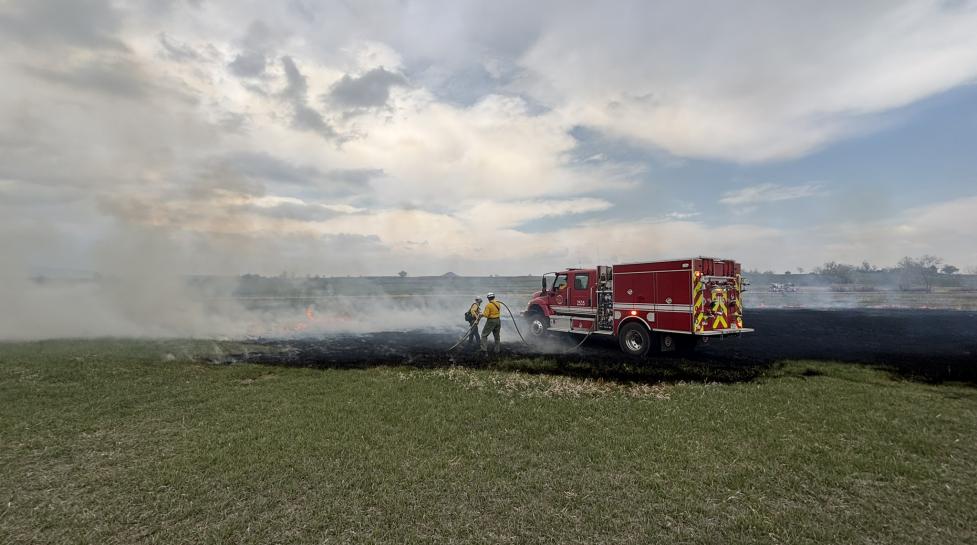The newly updated Community Wildfire Protection Plan informs wildfire resilience projects and initiatives being taken on by the city
BOULDER, Colo. — The City of Boulder is pleased to share its finalized list of 2025 priorities to continue advancing the city’s wildfire resilience and preparedness efforts. Some highlights of these priority action areas include:
- A comprehensive communications approach, including a new e-newsletter, Anchor Point, which launched on May 8. Future editions and communications and engagement assets will highlight key aspects of a coordinated, strategic and multi-disciplinary approach to addressing wildfire risk in the Boulder community.
- Continuing to grow the Wildfire Resilience Assistance Program (WRAP) for grants to eligible homeowners who undertake specific home-hardening efforts to make their properties and neighborhoods more wildfire resilient.
- Providing Detailed Home Assessments (DHAs) to Boulder Residents and advancing community risk reduction efforts that include developing training programs, establishing neighborhood ambassador opportunities and partnering with volunteers.
- Increasing the wildfire resiliency of our landscapes through mechanical fuel reduction. These efforts include reducing fuels in ditches, ingress/egress routes, around utility lines, in grasslands, shrublands, forests and high fire hazard vegetation on city land.
- Utilizing prescribed burning to safely reduce flammable vegetation while also assessing continued use and scale of prescribed burns for our area. .
- Implementing cross-boundary fuel and defensible space treatments with private, local, state, and federal partners.
- Developing a tactical fire response plan focused on wildland fire escalation. Addressing response operations, including staffing capacity, wildland fire vehicles, and response equipment. The city has approved the purchase of a new wildland-specific fire truck for 2025 in support of improving its wildfire response.
- Implementing short- and longer-term efforts related to fire ignition prevention through education, enforcement, and infrastructure improvements, and accelerating the city’s early ignition detection efforts.
Our 2025 project and program efforts are a continuation and leveling-up of work we have been doing, together with community and professional partners, for some time. The CWPP has provided the data, science and community engagement needed to guide our prioritization, and the Climate Tax Fund passed by voters has helped the city with critical resources to advance wildfire resilience and preparedness work in a more holistic way,” said Assistant City Manager Pam Davis.
As a reminder, the city adopted its Community Wildfire Protection Plan (CWPP) in 2024. The plan serves as a guiding document that assists the city and the Boulder community in making informed decisions about wildfire preparedness and risk reduction, recognizing that both government and individual actions are needed. Since then, while continuing proven and longstanding mitigation efforts, city staff have been hard at work determining how the city should plan, fund, and implement wildfire resilience strategies. The 2025 priorities reflect the guidance of the CWPP and other data-based strategies for making Boulder a Wildfire Ready place to live, work and play. These projects can be categorized into three main areas of focus: Fire-Adapted Communities, Resilient Landscapes, and Safe and Effective Wildfire Response.
Within each category, there are priority action areas for 2025 and beyond, which you can read about on the city’s Wildfire Ready projects webpage.
“Our citywide approach to making Boulder more resilient and prepared for wildfires includes multiple data-driven strategies to reduce the risk that fires pose to land, property, and life safety,” said Dan Burke, director of Open Space Mountain Parks. “The cross-departmental collaboration we’ve undertaken in 2024 and 2025 has been phenomenal, and our cohesive citywide approach to becoming Wildfire Ready makes me proud to be part of this work in Boulder.”
“Wildfire is part of our landscape here in Boulder,” said Boulder Fire-Rescue Chief Michael Calderazzo. “We are a community that needs to adapt to living with fire, and this means reducing the risks large fires pose to life safety. We can all make a difference! We see individuals, homeowners, neighborhoods, community partner organizations, and regional, state and national groups as essential partners. I’m proud of how the City of Boulder has expanded its creativity and capacity for meeting this challenge, especially given the urgency we’re all feeling around this issue.”
As a reminder to everyone in our community, outdoor fires and burning – except when prescribed burns are conducted as a fire risk reduction strategy by firefighter professionals – are prohibited in the City of Boulder. Never light a fire or campfire in Boulder, and if you see someone else do so you should call 911 to report it. Possession of fireworks is also illegal.
To learn more about how the City of Boulder is working to become more resilient and prepared for wildfires, visit Wildfire Ready and sign up for the new quarterly e-newsletter, Anchor Point.
— CITY—
